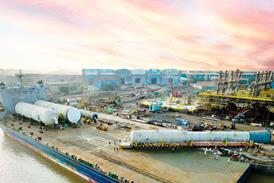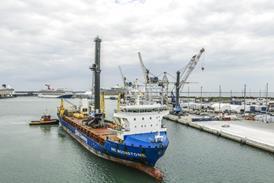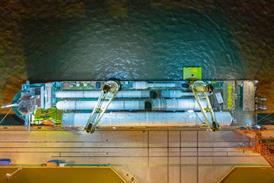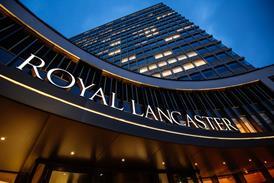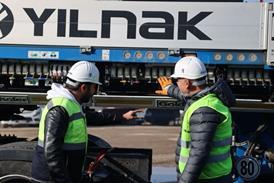The outbreak of war in Ukraine in 2022 led to a cascading of supply chain disruptions worldwide. The Caspian and Baltic regions have both been impacted significantly with the drive towards domestic alternative energy production being spurred on by a cutting off of Russian gas imports in the Baltics and the opening up of the Middle Corridor as a result of supply chain pressure through the Caspian.
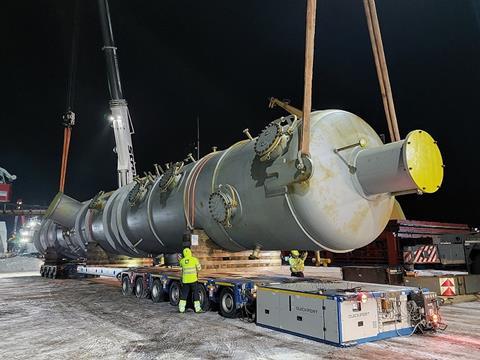
A parallel situation is taking place in both the Baltic Sea and the Caspian regions. While both represent essential historic trade routes in the world, the challenges presented by the outbreak of war have accelerated investments. On top of longstanding underdeveloped infrastructure, the conflict has had the adverse effect of opening up new opportunities for port infrastructure development.
Ilya Goncharov, project manager at 3PL Group said in HLPFI’s September/October 2024 editiion: “Poland has made a lot of investments in its port and Gdansk is the largest port in the Baltic Sea, so these investments, given the situation in Ukraine, will improve Poland’s strategic position.”
Much of this has been spurred on by Poland’s investments in new energy infrastructure over the past few years. Wind energy, in particular, has been most notable.
With the outbreak of conflict, countries like Poland have been forced to invest in alternative energy supply rather than gas imports from Russia. In October, Cadeler signed firm contracts for the Bałtyk 2 and Bałtyk 3 offshore wind energy projects in Poland, valued at EUR120-144 million (USD132.8-159.3 million). These will involve installing 100 offshore wind turbine generators in the Polish part of the Baltic Sea, with Cadeler planning to deploy vessels to take part in these projects.
In July, the European Commission (EC) also approved Polish plans to allocate EUR194 million (USD212 million) of funds to support the construction of an offshore wind energy terminal in Gdańsk.
Przemyslaw Boronski, head of heavy lift at AsstrA, explained that new power plants would create high demand for project cargo transport around the Baltic. For instance, the development of 6-9 GW of nuclear capacity, starting with three reactors at Lubiatowo-Kopalino, involves transporting heavy and oversized components.
Port modernisation is increasingly common across the region. Estonia, which suspended direct natural gas imports from Russia and decreased its gas consumption by 26 percent, has likewise been looking to develop its terminals to deal with the increase in project shipments resulting from these new investments. The port of Paldiski, for instance, received a newly ordered mobile harbour crane - a Liebherr LHM 550 - allowing for a lift of 200 tonnes when used in collaboration with another crane. This new addition means the port can handle a series of heavy cargoes such as wind turbine components, transformers, turbines and the like, which are being developed as a result of the energy transition.
Caspian Sea developments
In the CIS region, economic activity, transport routes and trade dynamics were all impacted by the war. The Caspian Sea, bordered by Russia, Kazakhstan, Turkmenistan, Iran, and Azerbaijan, is a crucial hub for oil, gas and other goods.
Even in the best of times, handling project cargo in the region can be difficult. Static infrastructure such as low bridges and tunnels are often unable to support heavy transport, forcing equipment to take long detours. Now, the imperative to invest in further modernisation of the regional infrastructure has been accelerated with the outbreak of war.
As with the Baltics, this region is subject to global fluctuations. Strained supply chains and cooperation in multilateral institutions are leading to a slowing of growth in many of the key sectors driving the region’s economy. While the Russia-Ukraine conflict is leading to more opportunities for CIS countries such as a rise in mining activity, sanctions have disrupted logistics and supply chains in the reason and impacting projects. Cargoes would previously be moved on bulk vessels through Russian rivers to Caspian ports but sanctions have made this largely impossible.
Logistics trade routes are now under pressure which has led to the opening up of the ’Middle Corridor’. In light of geopolitical disruptions caused by the conflict in Ukraine, logistics players have already set their eyes on developing the middle corridor. In August, Belgian maritime contractor Jan De Nul said it would be expanding existing ports and building new ones across the Middle Corridor.
Other countries have caught wind of the ambitious plans in the region and are seeking to invest. Germany, for instance, is increasingly interested in supporting logistics modernisation throughout Central Asia.
In September, Tobias Bartz, ceo and chairman of the Rhenus Group, signed an agreement in Samarkand, Uzbekistan to establish a joint venture with AO Uztemir’yolkonteyner, a subsidiary of Uzbek Railways. Plans for a modern logistics centre in Andijan are to be realised on this basis. The agreement involves developing an intermodal terminal in Kazakhstan.
In addition, Bartz signed a declaration of intent with the Kazakh company Aktau Sea Commercial Port for the development of an intermodal terminal in the port of Aktau, Kazakhstan.
The agreement took place during German chancellor Olaf Scholz’s visit to Central Asia, accompanied by Bartz and others.
“The Eurasian corridor is not only a trade route of international significance that contributes to the EU’s diversification strategy, but also a strategic lever for the global economy. Through our investments in Kazakhstan and Uzbekistan, which are supported by the governments of both these states as well as Germany, we are boosting regional infrastructure and reinforcing the position of German industry and the local export trade in the global market,” said Bartz.
In addition to developing a container terminal in the port of Aktau on the Caspian Sea on the alternative route to the new Silk Road, a project that was launched in the presence of the German president in 2023, the group is driving further projects for terminals in Kazakhstan’s economic hubs.
These initiatives are complemented by measures undertaken by the logistics service provider in the South Caucasus. Combined with a strong presence in Turkey, this will allow the creation of a supply chain along the Trans-Caspian International Transport Route between Europe and China via Central Asia.

